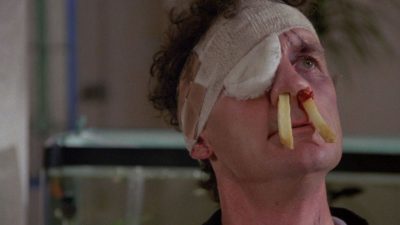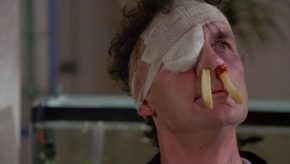Long Time No See!, Trafó, 13 May 2019, 8 pm
Official selection of Festival d’Avignon and Aerowaves 2019
Nominated for Rudolf Lábán Prize 2019
I wrote her in English as I only knew that she is a Finnish dancer. To my great surprise, she answered in Hungarian, and we even started to talk in this language. Jenna Jalonen, as it turned out, has already lived in Hungary for a while, moving to Budapest in 2008. Her cooperation with Beatrix Simkó, Hungarian dancer, also started here two years ago. Now they have a joint show, Long Time No See!, and it’s no overestimation that they bring Europe on the stage of Trafó House.
How did the cooperation start?
Long Time No See! was originally a research project on sisterhood in Europe. There are so many different cultures on this continent, but we still share a lot of experiences. And it is sort of a mythology that we, Finnish and Hungarian people, are connected through the language family. So language was the base idea, and we moved towards culture, stereotypes, isolation, communication from there. While working together at Éva Duda Dance Company, Beatrix and I formed a very strong friendship, and it was sure that we want to collaborate in creating a piece. We have very similar body types, physicality, and it was interesting to experiment with depicting identities or seeing how energy flows on stage.

Do I understand correctly, then, that this dance show is based on language? Are there textual parts in it?
Yes, we use textual parts in several scenes and we collaborated with a writer, András Vinnai, but the focus is not fully on meanings only. We deconstruct words, examine how they sound, what their role in communication is, we also (re)create the common mythology and use our own languages besides each other with humour. And of course, the show itself is mostly based on dance, metacommunication, body as a way of expression. We cooperated with set designer Dániel Dömölky in the creation of the scenography and light, and with Ábris Gryllus, media artist and musician, on the audio parts. The result is a quite intimate piece where we ask a bunch of questions through all these methods.
Why did you choose this title?
The working title was ’Terv.’ (’plan’ in Hungarian and ‘greets’ in Finnish), but there was a time we realized that this will be about more than just these two countries. So we changed the title to a more international one.

Do you really believe in an international sisterhood?
I do believe in it, but it is interpreted differently in different countries. In Finland, for instance, people are happy about our relation to Hungary. In Hungary, some people don’t really want to acknowledge it. For me, the language relation is obvious, as I arrived to Hungary and learned the language as smoothly as it was a second native language. And anyway, there is so much in common between these two countries. Both are isolated, they were always closed in their little bubbles of language identity, they were borderlands between bigger empires and almost always occupied. No surprise if we understand each other well.
How does the piece deal with stereotypes? I saw in the trailer that you use a sauna, which is probably the most typical first association in Finland’s case.
Sauna is an interesting symbol. On the one hand, it is a hot space that make you feel bare, but on the other hand, it’s not only a reference on Finland but also the Hungarian spa culture. There is so much room for interpretation – for example, our sauna on stage resembles a mother’s womb with two embryos inside, then opens up to the audience. Otherwise, we also reflect on more problematic common stereotypes: negative attitude, melancholy, alcoholism… These are all tackled in the play, but more gently than offensively.

How did the work with a friend go?
It worked very well. Although we have different backgrounds, but we also have a lot of common interests, so it was easy to work together. We kind of created a common language for our own, I guess. We saw the piece as a playground for both of us where we don’t have to take ourselves too seriously. Although the movement pattern is mostly settled, the play also gives room to some improvisation.
I read that nowadays Beatrix lives in Germany and you in Belgium. Does this make the European message even more important for you two?
I was very young when I first left Finland and I sort of grew up in Europe. Unlike my parents, for me open borders are natural, just like international experiences and constant travelling.
And where is home now?
Good question. (laughs) In the past, I often said Budapest, and now I’m spending more and more time there again, but I’m also active in Brussels. Actually, Budapest is still a home to me, I’m moving back these days. But I can’t emphasize enough in what a lucky situation I am because of all the different international collaborations, and that I have so many opportunities to travel, to broaden my horizon and my cultural skills.

























Comments